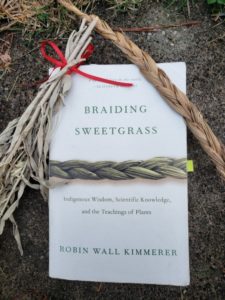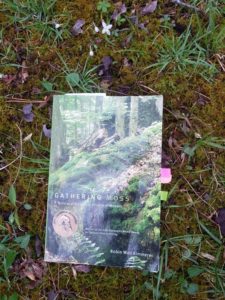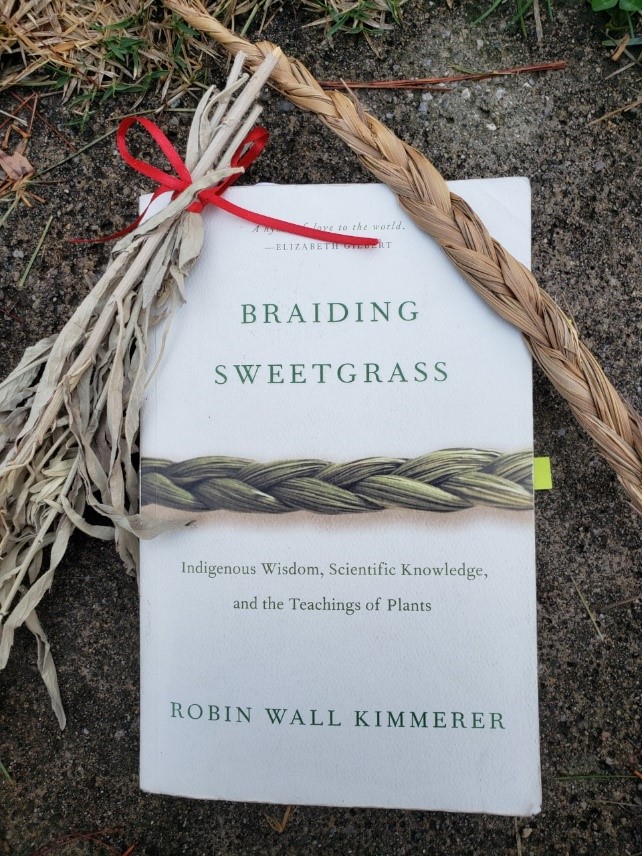by Wendy Warren
 In the formal classrooms of the 21st Century, children rarely have the opportunity to explore the natural world, and they rarely have the opportunity to let their curiosity guide their explorations. This time when we are all asked to be healthy at home seems a perfect opportunity to rekindle the spark of curiosity and a sense of wonder about the world. I see adults posting on social media things they have never before noticed about the world around them, but in this time of slowing down, they have once again begun to notice.
In the formal classrooms of the 21st Century, children rarely have the opportunity to explore the natural world, and they rarely have the opportunity to let their curiosity guide their explorations. This time when we are all asked to be healthy at home seems a perfect opportunity to rekindle the spark of curiosity and a sense of wonder about the world. I see adults posting on social media things they have never before noticed about the world around them, but in this time of slowing down, they have once again begun to notice.
Robin Wall Kimmerer has a lot to teach us about education. She is a botanist and a person indigenous to this land. “For all of us,” she writes, “becoming indigenous to a place means living as if your children’s future mattered, to take care of the land as if our lives, both material and spiritual, depended on it…In the Western tradition there is a recognized hierarchy of beings, with, of course, the human being on top—the pinnacle of evolution, the darling of Creation—and the plants at the bottom. But in Native ways of knowing, human people are often referred to as ‘the younger brothers of Creation.’ We say that humans have the least experience with how to live and thus the most to learn—we must look at our teachers among the other species for guidance. Their wisdom is apparent in the way that they live. They teach us by example. They’ve been on the earth far longer than we have been, and have had time to figure things out. They live above and below ground, joining Skyworld to the earth. Plants know how to make food and medicine from light and water, and then they give it away.” (p. 9, Braiding Sweetgrass).
What if we once again allowed the earth to become our classroom? What if, together with our children, we began exploring it again, learning all it offers to teach us? What if the educators among us carried this renewed spark of inquiry back into classrooms when the children return?
 In Gathering Moss, another book by Kimmerer, she writes, “In traditional indigenous communities, learning takes a form very different from that in the American public education system. Children learn by watching, by listening, and by experience. They are expected to learn from all members of the community, human and non. To ask a direct question is often considered rude. Knowledge cannot be taken, it must instead be given. Knowledge is bestowed by a teacher only when the student is ready to receive it. Much learning takes place by patient observations, discerning pattern and its meaning by experience. It is understood that there are many versions of truth, and that each reality may be true for each teller. It’s important to understand the perspective of each source of knowledge” (p. 76).
In Gathering Moss, another book by Kimmerer, she writes, “In traditional indigenous communities, learning takes a form very different from that in the American public education system. Children learn by watching, by listening, and by experience. They are expected to learn from all members of the community, human and non. To ask a direct question is often considered rude. Knowledge cannot be taken, it must instead be given. Knowledge is bestowed by a teacher only when the student is ready to receive it. Much learning takes place by patient observations, discerning pattern and its meaning by experience. It is understood that there are many versions of truth, and that each reality may be true for each teller. It’s important to understand the perspective of each source of knowledge” (p. 76).
“The sanitized suburban life has succeeded in separating us from the plants that sustain us. Their roles are camouflaged under layers of marketing and technology. You can’t hear the rustle of corn leaves in a box of Froot Loops. Most people have lost the ability to read the role of a medicine plant from the landscape and read instead the ‘directions for use’ on a tamper-proof bottle of Echinacea. Who would recognize those purple blossoms in this disguise? We don’t even know their names anymore. The average person knows the name of less than a dozen plants, and this includes such categories as “Christmas Tree.” Losing their names is a step in losing respect. Knowing their names is the first step in regaining our connection” (Gathering Moss, p. 101)
What if, during this time at home, we once again find our true home, our place as a part of the earth? What if our children emerge from this time changed by this opportunity to learn by exploring the gifts it offers?


1 Comment
Another excellent post. The last two lines from your quote from “Gathering Moss” are especially powerful. Thank you Wendy!
Recent Posts